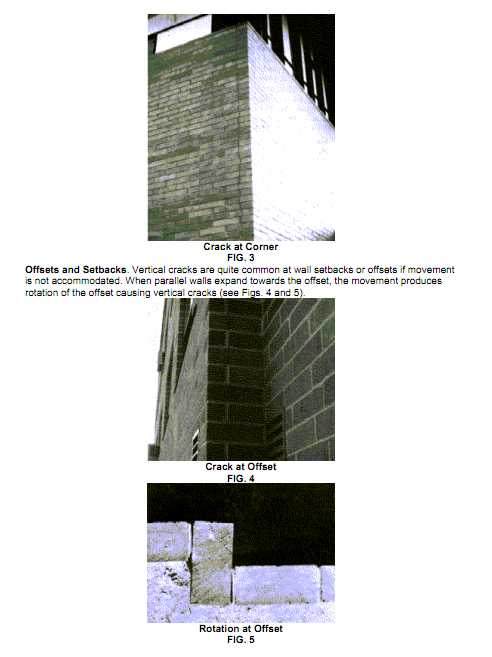Design and Detailing of Movement Joints

Technical Notes 18 - Volume Changes and Effects of Movement, Part 1 Rev [Jan. 1991] Abstract: This Technical Notes describes the various movements that occur within buildings. Movement induced by changes in temperature, moisture, elastic deformations, creep, and other factors develop stresses if the brickwork is restrained. Restraint of these movements may result in cracking of the masonry. Typical crack patterns are shown and their causes identified.
Key Words: brick, corrosion, cracks, differential movement, expansion
INTRODUCTION
The various materials and elements that are used to construct a building are in a constant state of motion. All building materials change in volume due to internal or external stimuli. These stimuli may be changes in temperature, moisture, elastic deformations due to loads, creep, or other factors. Restraint of these movements may cause stresses within the building elements which in turn may result in cracks.
To avoid cracks, the design should minimize volume change, prevent movement or accommodate differential movement between materials and assemblies. A system of movement joints can eliminate cracks and the problems they cause. Movement joints can be designed by estimating the magnitude of the several types of movements which may occur in masonry and other building materials.
This Technical Notes describes the various volume changes in brick masonry and other building materials. It also describes the effects of volume change when the materials are restrained. Other Technical Notes in this series address the design and detailing of movement joints and the types of anchorage which permit movement.
MOVEMENTS OF CONSTRUCTION MATERIALS
The design and construction of most buildings does not allow precise prediction of movements of building elements. Volume changes are dependent on material properties and are highly variable. Age of material and temperature at installation also influence expected movement. When mean values of material properties are used in design, the actual movement may be underestimated or overestimated. The designer should use discretion when selecting the applicable values. The types of movement experienced by various building materials are indicated in Table 1.
Temperature Movements
All building materials expand and contract with variations in temperature. For unrestrained conditions, these movements are theoretically reversible. Table 2 indicates the coefficients of thermal expansion for various building materials.
Download
http://s18.alxa.net/s18/srvs2/01/Des...ent.Joints.rar